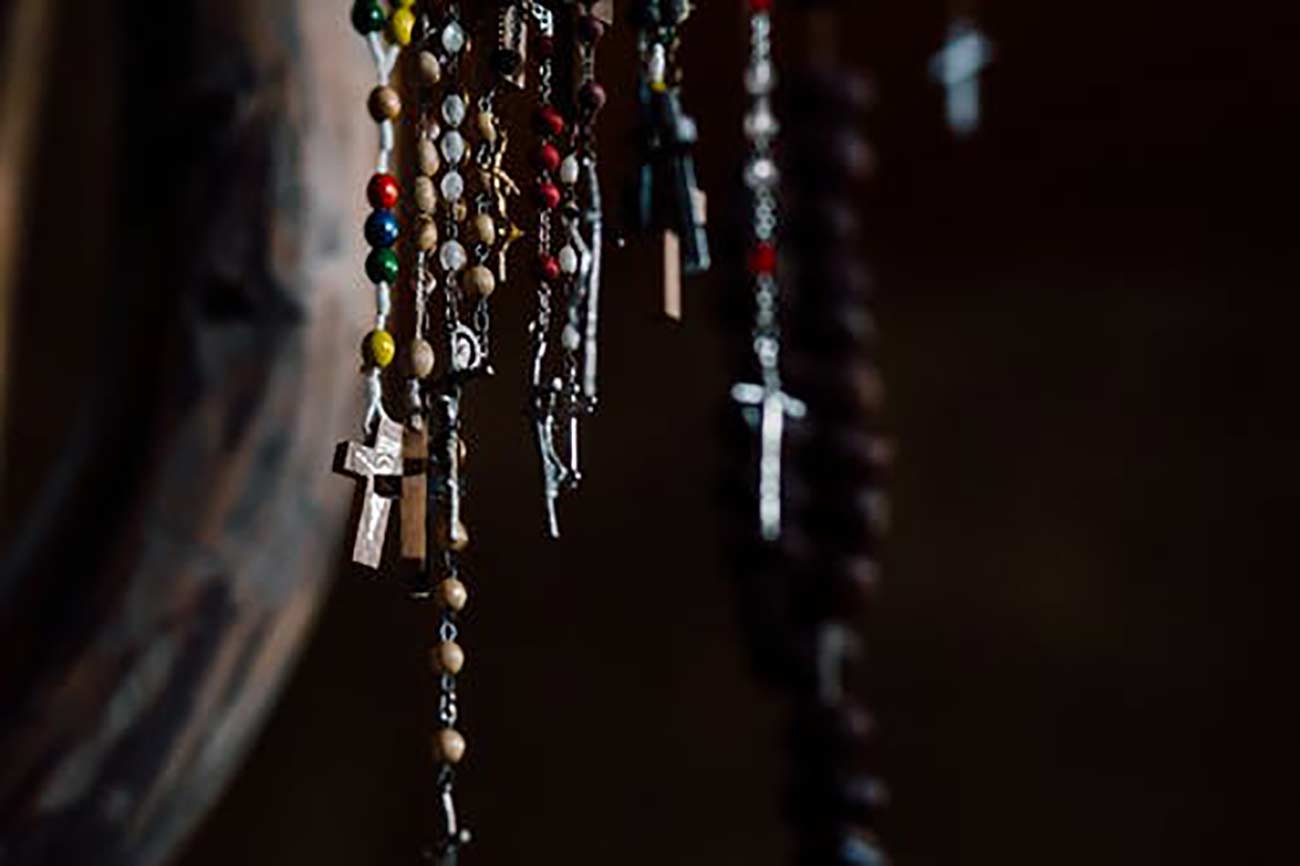The Rosary is a set of prayers that are said during meditation on events in the lives of Mary and Jesus, and the term also applies to a string of beads that is used to count the prayers. Collectors love to find antique rosaries. Rosaries began as a leather pouch full of pebbles but they evolved into the traditional rosary with the 59 beads that are used today. If you want to learn how to tell if a rosary is antique, continue reading.
Look at the Materials of the Beads
In the 19th century, rosary makers who were called Patermosterers made rosaries. They used seeds, wood, bone, Irish horn, coral, amber, mother of pearl, and precious metal filigrees. They also used glass art beads that were made to look similar to precious stones. Then, from the mid-19th century through the 1930s, they made Prosser glass beads of many colors. They used a technique that was invented in 1840 where they used pressure to mold cold glass and ceramic paste.
When you are trying to determine whether the rosary is an antique, the beads will give you a clue. Modern rosaries are often made using plastic beads. If you find beats of any of the original materials, such as wood, bone, coral, or others, you can be pretty confident that it is an antique.
Examine the Crucifix
You can also look at the crucifix to determine if the rosary is an antique. Vintage crucifixes were quite often made with sterling silver or 800 silver, which is a European standard. In addition, they were made from gold fill or vermeil, which is gold washed over a base metal.
One type of crucifix contains the Stanhope cross, which is a cross with a tiny peephole. You can see tiny images of holy places or saints inside the peephole. Later, end-capped crucifixes were made using mother of pearl, wood, or Bakelite. Bavarian crucifixes were made by combining a small Credo Cross with a larger one made of silver or gold filigree.
You can also find pillow crucifixes made of ebony or leather that were set between the back or corpus (the body of Christ). Aluminum was first introduced in the late 19th century; it was expensive but still popular. No matter what the metal is, you should check to see if it matches the center metal. Although crucifixes would break and were often replaced, the center metal of the rosary is usually the original.
Check with an Appraiser
Although you can get a good idea of the date when your rosary was made, you can pinpoint it further by taking it to an appraiser. These professionals are trained to know when rosaries were made and they know how to look at the materials and design to determine whether this rosary is vintage or not. There is a special group of appraisers called religious antique appraisers and they will be able to determine when your rosary was made.
Many of these experts will go over the rosary with you so that you can learn how to determine if a rosary is an antique. They can often tell you when and where it was made as well as what the materials are inside. You can learn a lot when you go to a religious appraiser to find out whether your rosary is an antique.
Rosaries have been used for centuries by people all over the world and finding an antique rosary can be a special occasion. When you want to know if your rosary is an antique, you need to look it over. Look at the material used to make the beads and then examine the crucifix. If you are having trouble determining what it is made of, you can go to an expert. Experts have years of experience in spotting antiques and they will be able to tell you when and where your rosary was made.

I found a Beautiful one and want too know
I have a set of prayer beads that have a medal instead of a crucifix, the beads are wooden, I believe it’s 7 sorrows. I am just wondering how old it would be. Thanks